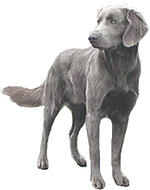 Here at Hogan we have a lot of conversations about pretty complicated stuff, and odds are, if you are reading this, you have at some point been on the other end of one of those conversations. It is always our goal to simplify concepts into language that is more readily understood. It’s not that we are more intelligent than those with whom we speak, but we live and breathe personality assessment and the vast majority of people (read: normal people) don’t. One concept that seems frequently misunderstood is identity vs. reputation. Identity is how we view ourselves, reputation is how others view us.
Here at Hogan we have a lot of conversations about pretty complicated stuff, and odds are, if you are reading this, you have at some point been on the other end of one of those conversations. It is always our goal to simplify concepts into language that is more readily understood. It’s not that we are more intelligent than those with whom we speak, but we live and breathe personality assessment and the vast majority of people (read: normal people) don’t. One concept that seems frequently misunderstood is identity vs. reputation. Identity is how we view ourselves, reputation is how others view us.
The easiest way to explain this concept is in terms of American Idol. Even if you don’t typically watch the show, you have probably seen at least one audition from someone who either blew the judges away with their talent, or their horrendous lack thereof. Let’s focus on the latter: the people we’ve watched get crushed by the judges’ words. What’s fascinating is that at some point those poor souls decided that they possessed the vocal vigor to become a star. According to their identity, they could actually do something great. Their reputation is what the judges perceived, and as we’ve all seen, there is often a significant disparity between the two.
Why is this so important? If the contest were to be based on performers’ own perceptions of their talent, the show would need to be called “American Idols,” as everyone would be a star. The truth is that performers’ assessment of their own talent is largely irrelevant – success depends on how others rate their ability to sing and perform. The same can be said for the vast majority of our daily activities and interactions, particularly in occupational settings. Business success depends on results, not sense of self. Challenges to getting along and getting ahead emerge when we fail to realize that our internal story is trivial to others; it is the external perception of our behavior that truly matters. As harsh as it sounds, unless you are on a first date or sitting around a table of drinks with friends, the story that makes you you just doesn’t matter.
Now, I can see your wheels turning and hear the words formulating in your head: “But wait a minute…I have seen a Hogan assessment and it asks people to answer questions about themselves. If reputation is more important, then why do you ask someone about their identity?” It’s an excellent question and the answer is much more straight forward than the means through which it was accomplished. The Drs. Hogan found that, although relatively irrelevant, identity is a very reliable means of predicting reputation. The assessments do ask identity based questions, however, the results report how others generally perceive people who answer the questions in that way. To make that simple, we are not going to tell you about yourself, as you know a lot more about you than anyone else. We will, however, tell you how others are likely to describe you based on how you describe yourself. Furthermore, we will help to provide you with the wisdom to become an American Idol, or perhaps to know when you should walk away from the stage.


 I have been with Hogan now for just under 12 years. It’s been an incredible experience and I’m privileged to work alongside unbelievable intelligence and talent, but I have to be honest about something: in non-professional situations I dread the question, “So what is it that you do, Jesse?” I envy my wife, who when faced with the same question can simply say “I am a teacher,” or a friend who answers, “I’m an engineer.” You see, my response is something like, “I work for Hogan Assessment Systems. We publish personality assessments.” And so it begins….
I have been with Hogan now for just under 12 years. It’s been an incredible experience and I’m privileged to work alongside unbelievable intelligence and talent, but I have to be honest about something: in non-professional situations I dread the question, “So what is it that you do, Jesse?” I envy my wife, who when faced with the same question can simply say “I am a teacher,” or a friend who answers, “I’m an engineer.” You see, my response is something like, “I work for Hogan Assessment Systems. We publish personality assessments.” And so it begins…. It’s that time again. The leaves are turning, the clocks need changing, and the air carries that crispness that can be associated with only one thing: a mustache. Dustin Hunter,
It’s that time again. The leaves are turning, the clocks need changing, and the air carries that crispness that can be associated with only one thing: a mustache. Dustin Hunter,  Evidence shows that at least 50% of individuals in leadership have, will, or are failing. The vast majority of suggested solutions revolve around high potential identification, leadership development programs and the like. The purpose of such initiatives is to identify the individuals who should be leaders, but given the statistic above, one has to wonder about their effectiveness.
Evidence shows that at least 50% of individuals in leadership have, will, or are failing. The vast majority of suggested solutions revolve around high potential identification, leadership development programs and the like. The purpose of such initiatives is to identify the individuals who should be leaders, but given the statistic above, one has to wonder about their effectiveness.  I recently celebrated my 31st birthday, which, in today’s world, qualifies me to begin sentences with the phrase “back in my day.” I admit this begrudgingly; back in my day, it seemed that statement was reserved for an individual well out of his or her 30s. Still, from time to time, I do find myself sounding a bit curmudgeonly. No, I never claim to walk uphill both ways, barefoot in the snow to school, but I do sometimes struggle to grasp the rate at which technology has changed life since I was in school.
I recently celebrated my 31st birthday, which, in today’s world, qualifies me to begin sentences with the phrase “back in my day.” I admit this begrudgingly; back in my day, it seemed that statement was reserved for an individual well out of his or her 30s. Still, from time to time, I do find myself sounding a bit curmudgeonly. No, I never claim to walk uphill both ways, barefoot in the snow to school, but I do sometimes struggle to grasp the rate at which technology has changed life since I was in school. For as long as I can remember, I have had a strong affinity for canines. In fact, I haven’t ever been without at least one, and don’t ever imagine a time in my life when I will. In keeping with that trend I recently became the proud adopted father to two dogs - Weimaraners. You have probably heard about how utterly insane this particular breed of canine can be. You may have even experienced it firsthand; either way their reputation precedes them. I tend to sway from popular opinion and think that people often err on the side of exaggeration, so I went with the mentality of “how bad can it really be?” and took the leap. The diplomatic way to summate the result of that leap is to say that I have learned a lot in these past months. I have learned a lot about patience, when to laugh, when to scream, when to cry, and also just how quickly my hair can morph into the color of the very beasts causing the change. Oddly enough, however, I have also been able to draw some conclusions about an unexpected topic: leadership.
For as long as I can remember, I have had a strong affinity for canines. In fact, I haven’t ever been without at least one, and don’t ever imagine a time in my life when I will. In keeping with that trend I recently became the proud adopted father to two dogs - Weimaraners. You have probably heard about how utterly insane this particular breed of canine can be. You may have even experienced it firsthand; either way their reputation precedes them. I tend to sway from popular opinion and think that people often err on the side of exaggeration, so I went with the mentality of “how bad can it really be?” and took the leap. The diplomatic way to summate the result of that leap is to say that I have learned a lot in these past months. I have learned a lot about patience, when to laugh, when to scream, when to cry, and also just how quickly my hair can morph into the color of the very beasts causing the change. Oddly enough, however, I have also been able to draw some conclusions about an unexpected topic: leadership. 